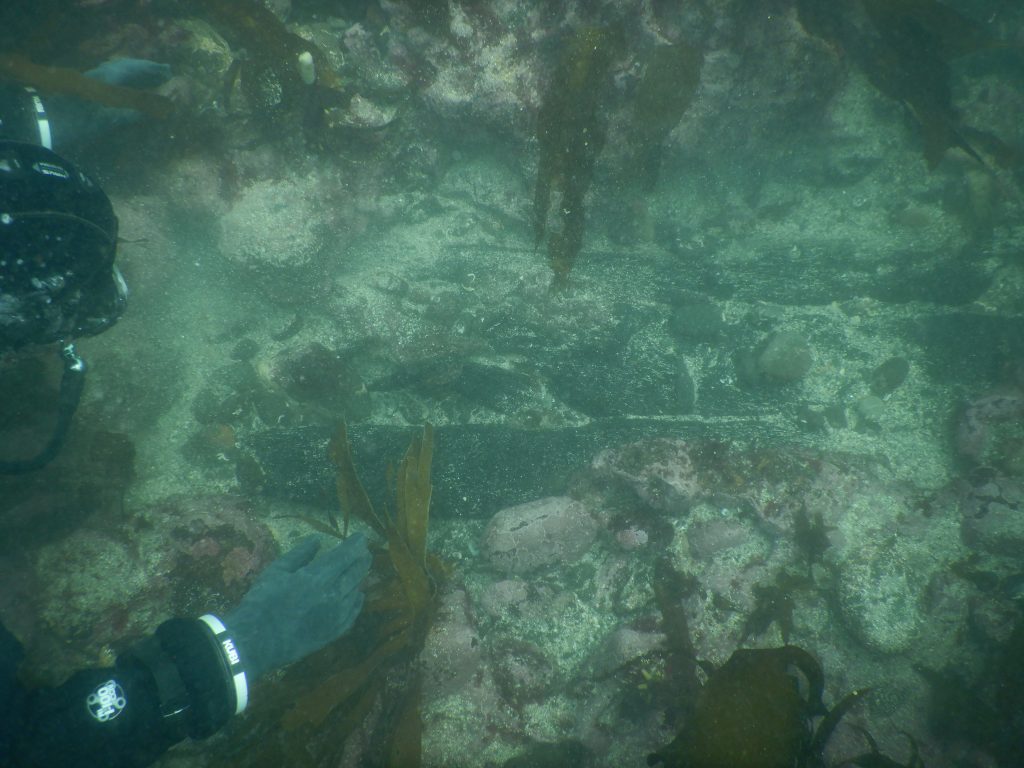The first dive of the season has been undertaken on Gun Rocks, by four BSAC divers, from our club rhib. The intention of the dive was to remove the kelp from the cannon (under the MMO licence for the site) and to remove the dive trail rope, which we noted last year had been storm damaged.

The forecast was for a bit of swell, with the wind getting up in the afternoon. This was a weekend of spring tides, so we couldn’t launch until after 10am, by which time there was sufficient water in the harbour for us.
Gun Rocks can be dived on a flood tide, as the rock itself shelters the diver from the tide. That said, it does create a large eddy, so if you stray from the shelter of the rock you will very rapidly end up in Holland! Shelter for kitting up can easily be sought by motoring in between gun rock and Staple Island, but minding the shallow reef which runs across its entrance to the south.
On arrival we kitted up, cameras, knives and scrubbing brushes at the ready!

As soon as we descended, we found that the visibility was about 2-3 metres, it is always less in the kelp. Out came the knives and we started to uncover the cannon, 14 in all. The kelp growth was quite thick on some of them, though the surrounding area looked like the winter storms had cleared the more mobile cobbles of their usual kelp forest.
But had this uncovered anything else? Past reports had been made of timbers on the site following strong storm surges, but no one has ever photographed them.

Well the answer was an exciting yes! Tiago was photographing the pile of concreted cannon balls that I had just cleared of kelp, when he saw some dark objects on the seabed. He then started clearing the sand and cobbles, to reveal a set of timbers. They had regular round holes in them, some joints wood and metal, and appeared to be very old. We took as many photographs as we could….





As the weather was starting to change, we decided only to do the one dive. The wind was increasing, and since it was wind against tide, so too was the wave height. A very wet slightly bumpy trip back to harbour.
Now we are all just excited about finding out more… will the timbers help us to age and possibly identify the wreck more clearly? All very interesting questions. We have already contacted our Archaeologist, and hope that we can revisit the site soon to find out more.
As a final note, we have now removed the diver trail and marker buoy, but hope to reinstate both before the main summer season. The rope is lead lined, so should sit on the bottom for a few years. The marker buoy however has a habitat of going AWOL every year; something I would like to prevent, as it just adds to the plastic junk in the sea….